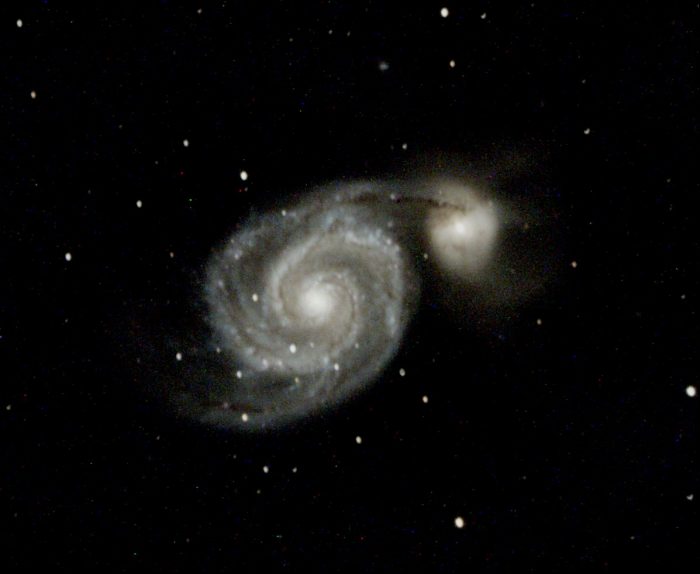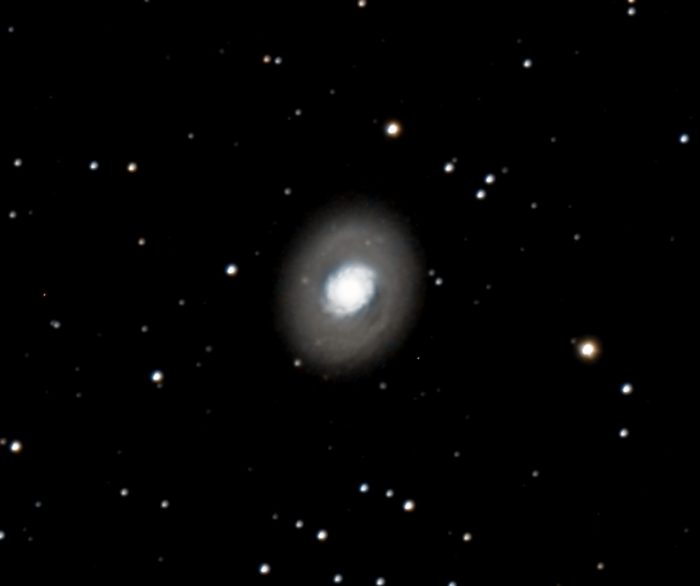Last month, I focused on some of the galaxies that are visible in the eastern skies. There are also quite a few spectacular galaxies in the northern skies. Here are three that appear in the area of the Big Dipper.

M51, the Whirlpool galaxy, is a beautiful spiral galaxy. It has a visual magnitude of +7.9. M51 and was discovered by Charles Messier in 1773. M51 is 28 million light years away from us.

M101, the Pinwheel Galaxy, was discovered by Pierre Mechain in 1781. He described it as a “nebula without star, very obscure and pretty large.” It wasn’t until 1851, that its spiral nature, (and presumably the stars), was discovered. It has a visual magnitude of +7.77 and is 23 million light years away from us.

Mechain also discovered M94 in 1781. It has a visual magnitude of +7.88 and is 14 million light years away.
What you can look for in April’s Night Skies
April’s evening skies start with the planet, Venus, and the star cluster, Pleiades, appearing very close to each other in the western sky. In reality, the stars of the Pleiades are about 360 light years beyond Venus!
Uranus starts the month between Venus and the horizon.
If you get up before 3:00 a.m. and the skies are clear, you might get a glimpse 3 planets rising in the East. Jupiter rises first at about 3:08 a.m., followed by Saturn at 3:30, and Mars at 3:35. There is an invisible fourth member to this group, the dwarf planet, Pluto. It’s just behind and below Jupiter.
The Lyrid meteor shower peaks on April 21. It features about 10-20 shooting stars per hour. The Lyrids are easy to find. Simply look for the very bright, blueish-white star, Vega. At midnight on the 21, Vega will be just above the NE horizon but the best observing of the meteor shower will be around 4 AM!
Moon Phases:
1st Quarter is the 30th
Full Moon 7h
Last Quarter is the 14th
New Moon is the 22nd



